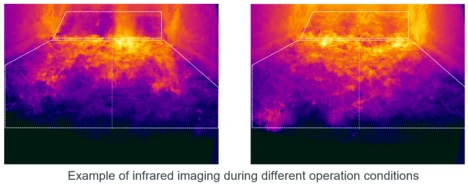Using Infrared Imaging to Predict Waste-to-Energy Power Plant Behavior
- Sponsored by: MARTIN GmbH für Umwelt- und Energietechnik
- Project lead: Dr. Ricardo Acevedo Cabra
- Scientific lead: Daniel Kikillus, Benjamin Jaidi , Stefan DeYoung.
- TUM co-mentor: TBA
- Term: Winter semester 2025
- Application deadline: Sunday 20.07.2025
Apply to this project here

In waste-to-energy power plants, municipal solid waste undergoes controlled incineration on combustion grates, neutralizing potentially harmful substances while generating useful energy in form of electricity and heat. As municipal waste serves as the primary energy source in this system, the feed rate onto the combustion grate is the key control variable. Precise regulation of this input directly influences heat release, maintaining optimal operating conditions that ensure both energy efficiency and minimal emissions. Discontinuous, non-deterministic waste feeding creates uncertainties that make it difficult to maintain the plant’s ideal operating conditions and high combustion chamber temperatures make conventional observation approaches infeasible. Infrared images showing the thermal patterns could provide crucial insight into actual waste distribution patterns onto the combustion grate, enabling the optimization of the combustion process.
The project goals are to use infrared images to quantify actual waste volume as it drops onto the grate and to establish a relationship between infrared image patterns with plant operating conditions and measurements. The findings of the project can then be integrated into the plant control systems to optimize operations using model-based approaches and achieve more stable operating conditions leading to higher energy efficiency and minimizing undesirable emissions.
The student team will work in our Azure Databricks environment, using the languages/frameworks Python, SQL, and Apache Spark.
The key milestones of the project are:
- Preprocessing: Minimize process-inherent image noise,
- Feature Engineering: Extract relevant visual indicators,
- Develop algorithms to accurately detect and quantify waste drop events,
- Develop regression models that predict thermal energy release from waste drop events (or directly from infrared image patterns).
Apply to this project here